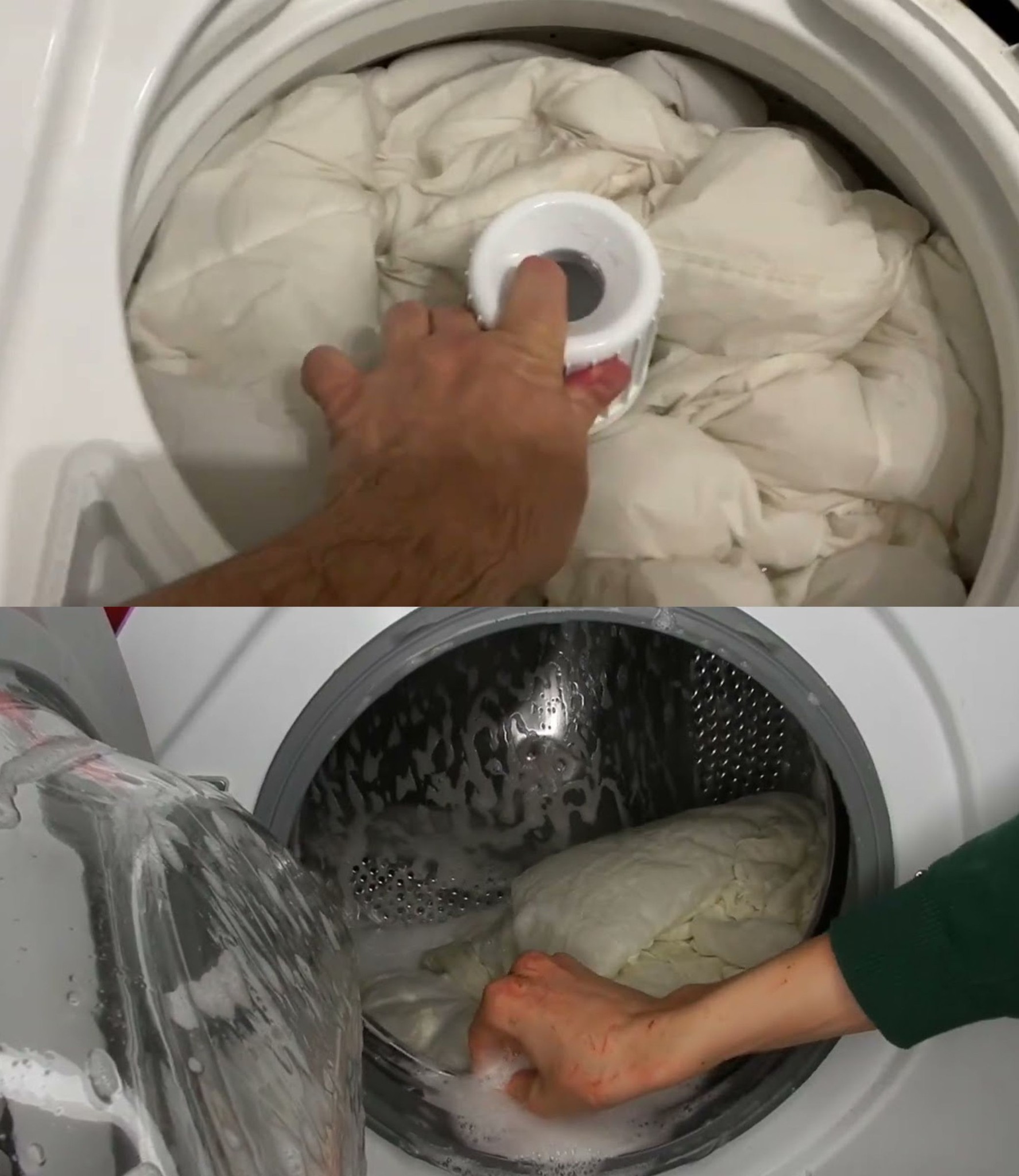ADVERTISEMENT
### Why Is Washing a Duvet So Challenging?
Before we delve into the trick, let’s take a moment to understand why washing a duvet is so tricky. There are several factors that make this task much more difficult than it may seem at first glance.
#### 1. **Size and Bulk**
Duvets are typically large and bulky, which is great for providing warmth and comfort during cold nights but can be a nightmare when it comes to washing. A duvet may be too big to fit into a small household washing machine, especially those with less than a 7 kg capacity. If you do manage to squeeze it in, you might find that it doesn’t get cleaned properly because the detergent and water can’t reach every part of the duvet.
#### 2. **Weight**
When wet, a duvet becomes extremely heavy. This added weight can make the duvet difficult to handle and increase the chances of damaging your washing machine’s drum, especially if it’s a front-loader.
#### 3. **Water Absorption**
Duvets, particularly those filled with down or synthetic materials, absorb a significant amount of water. This can make the duvet incredibly heavy when wet, and it may take a long time to dry afterward. If you’re using a standard-sized washing machine, the duvet may not agitate properly, leaving parts of it unclean.
#### 4. **The Risk of Damage**
Washing a duvet incorrectly can lead to damage. The filling could shift, clump, or even break down over time, making the duvet lose its loft and warmth. In addition, duvet covers may get torn or the stitching might come undone if you’re not careful when loading them into the machine.
### The Unthinkable Trick: Rolling Your Duvet for Easy Washing
While most people think the key to successfully washing a duvet lies in getting it into the machine with brute force, there’s a much simpler method that requires no force at all. The trick to easily putting your duvet into the washing machine is to **roll it up tightly**. Here’s how:
#### Step 1: Prepare the Duvet and Washing Machine
Before you start, make sure the duvet is clean and free of any loose debris. If your duvet has a cover, remove it. It’s important to clean the duvet separately from any other laundry to ensure it has enough space to agitate and be cleaned properly. Check your washing machine’s capacity as well; ideally, you should be using a washing machine that has a 7kg+ capacity, especially if you have a king-size duvet.
Make sure your duvet’s filling material (whether it’s down, feathers, or synthetic fibers) can handle machine washing. Most modern duvets are machine washable, but always check the care label to make sure you’re not going to damage the duvet during the process.
#### Step 2: Lay Out the Duvet
Place your duvet on a flat surface, such as a bed, couch, or large table. You want to make sure the duvet is spread out as evenly as possible so you can roll it tightly without leaving any gaps or folds.
#### Step 3: Roll the Duvet
Start rolling your duvet from one end, just like you would with a sleeping bag. Make sure you’re rolling it tightly but without forcing it, as this will help the duvet maintain its shape during the washing process. You want to create a roll that is compact but still allows water and detergent to penetrate the fabric during the wash cycle.
Step 4: Place the Rolled Duvet into the Washing Machine
Once you’ve rolled the duvet up tightly, carefully place it into the washing machine. Because the duvet is now rolled up, it should fit much more easily in the drum compared to trying to shove the entire duvet in one go. The key here is that the rolled-up duvet can move more freely in the washing machine, ensuring it gets agitated properly.
For Complete Cooking STEPS Please Head On Over To Next Page Or Open button (>) and don’t forget to SHARE with your Facebook friends
